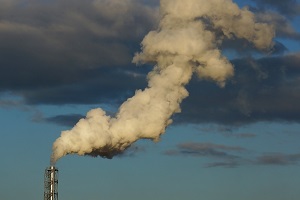
With the amendments to the Protocol to Abate Acidification, Eutrophication and Ground-Level Ozone (Gothenburg Protocol) under the UNECE Air Convention now in force for almost a year, preparatory work is underway for the review of the effectiveness of its measures.
The amended Protocol establishes legally binding emissions reduction commitments for 2020 and beyond for the major air pollutants: sulphur dioxide (SO2), nitrogen oxides (NOx), ammonia (NH3), volatile organic compounds (VOCs) and fine Particulate Matter (PM2.5). With 23 Parties to date, the amended Protocol is already supporting action for clean air in a number of countries.
At the sixth joint session the scientific bodies under the UNECE Convention on Long-range Transboundary Air Pollution, Steering Body to the Cooperative Programme for Monitoring and Evaluation of the Long-range Transmission of Air Pollutants in Europe (EMEP) and the Working Group on Effects (WGE), held virtually last week, experts discussed the review of the Gothenburg Protocol. In particular, they discussed a catalogue of questions for the review, relating to, for example, the progress made towards achieving the environmental and health objectives of the Protocol and the evaluation of abatement measures for specific pollutants, such as black carbon and ammonia.
In addition experts also discussed new possible elements of the review, in particular relating to protection of marine ecosystems, chemicals of emerging concern, substances introduced by industry replacing those banned, such as new persistent organic pollutants, pesticides or microplastics, the effect of air pollutant emission changes outside the region on concentrations and depositions within it, and trends of ozone pollution.
Importantly, the topic of condensables and ozone were discussed more in-depth: condensable particles are a part of particulate matter emissions but are currently not systematically included in the emission inventories. Studies show that this can lead to large differences in PM reporting. Work is underway to recommend a practical approach for inclusion (or exclusion) of condensables in inventories and chemical transport models.
Experts also discussed the state of knowledge on tropospheric ozone pollution, relating to trends, precursors, abatement strategies and effects on health and ecosystems, among other issues. Scenarios show that ozone in Europe will decrease as a result of European and (mainly) North American air pollution legislation supported by the Air Convention. However, increasing methane emissions will more than offset other emissions decreases after 2030. Pessimistic scenarios see a large increase (12-26%) in premature deaths as a result of ozone exposure in 2050 relative to 2010 in Europe. Global mitigation strategies for methane emissions are seen to be most effective in reaching substantial health benefits.
Recommendations will be further discussed at the 40th session of the Executive Body for the Convention in December this year.

